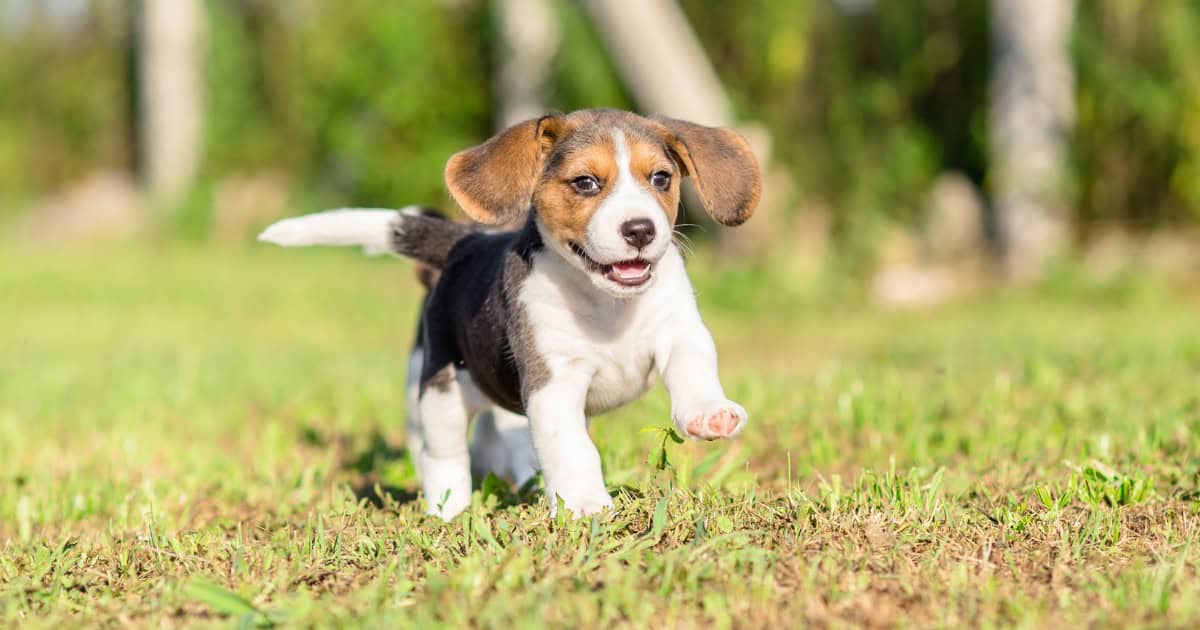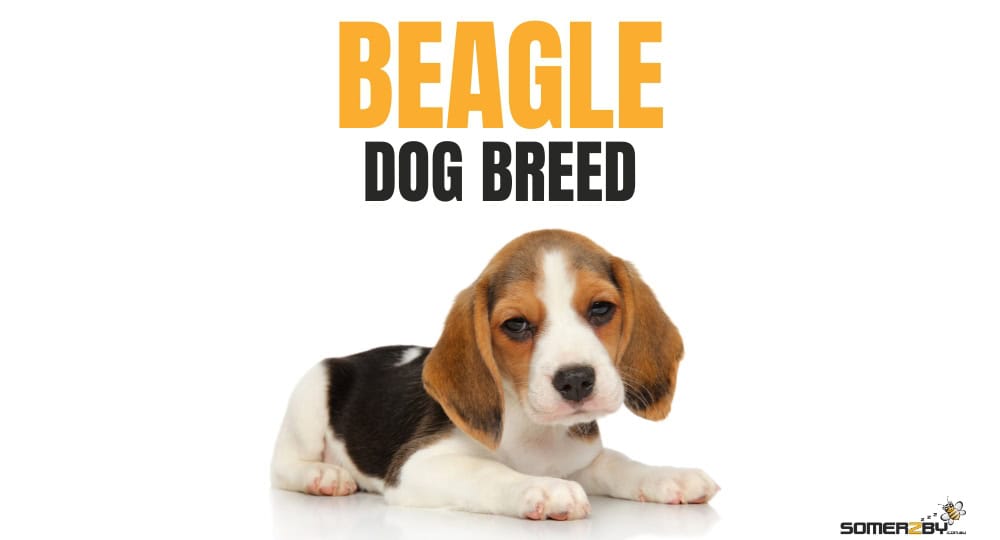Dogs
Beagle Dog Breed, A Guide on Health, Temperament, History and Keeping As Pets
Beagles
Beagles are classified as hounds and are the smallest breed of hunting hounds. Beagles are most commonly used as family pets and hunting dogs. They are known to have an excellent sense of smell and can often be seen sniffing around the yard and following their noses.
They are best at following smells on the ground, not in the air.
Breed Varieties
There are two varieties of beagle recognised by the American Kennel Club: small and large. The small beagle is classified as measuring 13 inches or less in height (measured at the shoulder) and the large beagle is typically between 13-16 inches.
Crossbreeds
Beagles can be cross bred with many other breeds. Some popular designer cross breeds are puggles (pug), borkies (Yorkshire terrier), doxle (dachshund) and beaglier (Cavalier King Charles spaniel).
Other crossbreeds are:
- American Eagle: American Eskimo and Beagle.
- Sharp Eagle: Shar-Pei and Beagle.
- Poogle: Poodle with a Beagle.
- Peagle: Pekingese and Beagle
- Labbe (beagador / labeagle): Labrador Retriever and Beagle
- Bogle: Boxer and Beagle
Appearance
Size
Beagles are a small dog that resemble a miniature foxhound. They have long, hound-like ears which are set low on their head.
Weight & Height
There are two main purebred sizes: Small and Large. Male beagles usually weigh between 8-12kg, with females generally being slightly smaller weigh around 8-10kg. Beagles typically reach adult height around the 6-8 month mark, and grow into their weight a year later. Beagles may vary in size depending on their breed mix.
Coat
They have a short coat which is smooth and weather resistant.
Colours
The most common colouring is tricolour (black, tan and white). They also come in other hound colours such as lemon pied or red and white.
 Temperament
Temperament
General
They make poor guard dogs. They will bark at first when a stranger enters your home, but they will be easily won over with pats and treats.
Beagles are bred to be pack animals and love to be part of a family.
Gentle Nature
Beagles are gentle and friendly dogs that are rarely aggressive. They get along well with children and other dogs and can be trained to get along with other animals including cats. They are often described as being ‘merry’. Beagles are both curious and intelligent.
Active
Beagles are very playful and full of energy. Beagles require at least an hour of exercise daily for physical and mental health benefits.
Hounds
Beagles are a scent hound bred primarily for hunting rabbits and hares.
Beagles can be used as sniffer dogs for the detection of prohibited agricultural and food items in quarantines worldwide. They are also used for termite detection.
Health
Beagles have a life expectancy of 10-15 years. Overall, beagles are a healthy breed and do not suffer from any major problems.
Problems
They are prone to ear infections because of their floppy ears. Their ear may not receive enough air flow or moisture can get trapped inside them. Other health concerns to keep an eye out for are: diabetes, epilepsy, eye issues (cherry eye), allergies, and (PRA) progressive retinal atrophy.
Exercise Requirements
Beagles are also prone to obesity and all associated conditions such as heart and joint issues. Beagles are hunting hounds bred for hours of activity and require at least an hour of exercise daily.
Hip Dysplasia & Intertebral Disc
Beagles can suffer from epilepsy, hypothyroidism, dwarfism, hip dysplasia and disc problems due to the breed’s size.
 History
History
Hounds have been around for thousands of years. William the Conqueror brought the Talbot hound to Britain in the 11th century.
Modern beagles originated in Great Britain in the 1830s.
It is believed Reverend Phillip Honeywood bred them from the harrier, foxhound, Talbot hound, north country beagle, Kerry beagle and the southern hound.
Beagles were exported to the USA around 10 years later, used for rabbit hunting. In 1885, General Richard Rowett, L. H. Twadell and Norman Ellmore bred beagles to look as they do today.
They were then accepted as a breed by the American Kennel Club.
Their first ever registered beagle was named Blunder.
Breed Name
It is unclear where the name ‘beagle’ came from.
Some say it is derived from the Gaelic word ‘beag’ (meaning ‘little’) while others say it is from the French name for the sound hounds make while hunting ‘be’geule’.
Hunting
History
Beagles have always been used as a hunting dog, particularly for rabbits. Rabbit hunting, known as ‘beagling’, often involved a pack of 10 or more beagles. They are excellent at tracking scents on the ground and are known for being loyal companions.
As a foot hound, they’re especially appealing because they can be easily followed on foot, without needing a horse.
 Popularity
Popularity
Beagles are a popular pet amongst families. They are the most popular hound dog kept as a pet.
The American Kennel Club ranks beagles’ popularity as 5 of 194. The National Beagle Club of America was formed in 1888 and in 1901 the first beagle won Best in Show.
The beagle has only decreased in popularity during both world wars but has always bounced back.
Beagles As Pets
Feeding
Beagles should be fed a balanced diet split into two meals per day. The recommended portion size is between 3/4 to 1.5 cups of premium dry food, though this may vary based on factors like age, weight, and activity level.
Their diet should include high-quality protein from meat sources, essential fatty acids and omegas, moderate carbohydrates from vegetables, herbs, or berries, natural vitamins and minerals from bones and plants, and hydration from moisture-rich foods and clean, fresh water.
They are prone to being overweight as they do not stop eating once they are full. Owners must watch how much they feed their beagle and limit treats.
 Sleeping
Sleeping
It is common for beagles to snore while they sleep, especially if they are overweight.
Grooming
Beagles require minimal grooming. They shed a light amount of fur throughout the year. Their coat gets heavier in winter. Weekly brushing will remove loose fur and aid in new hair growth.
Bathe your beagle every 2-4 months (unless it gets particularly dirty!). Washing too regularly can irritate the skin.
Nails should be trimmed regularly.
Because beagles have floppy ears, they will need to be checked frequently to ensure they are clean and not infected.
Exercise Requirements
Beagles are active and love to play. They require regular exercise. However, beagles are not hyperactive and do not need to be worked to exhaustion before being happy to rest.
Walking
Beagles cannot be walked without a leash. They can get distracted by a scent and follow their nose so keenly they lose their way or won’t come back when called.
Beagles can escape from yards (often when tempted by a smell outside) so fences must be 1.5 meters or taller and have something underneath to prevent tunnelling.
A great way to exercise your beagle is to hide treats or its favourite toy in the yard and let it find them by sniffing.
Training
Beagles can be hard to train. They are eager to please their owners. However, they can be single minded and distracted easily, especially by smells.
It is important to start early and remain consistent with training.
Treats motivate beagles best as they love to eat. Always use positive reinforcement instead of punishment when training.
 Where to Buy and Price
Where to Buy and Price
Beagle puppies from a breeder can cost $1000-1500.
This should include microchipping, first vaccination, worming and an information pack about your dog.
Breeders can be found online via each state’s beagle club, such as Beagle Club NSW.
Beagle Puppies
Beagle puppies from a shelter or rescue organisation can cost around $500.
This should include desexing, microchipping, vaccinations, worming and a vet check. Each state has beagle rescue organisations, such as Beagle Rescue Vic.
There is also Beagle Freedom Australia which aims to home animals used in laboratory research
Beagles are commonly used in laboratory testing because of their size and gentle temperament. This can include medical, cosmetic and chemical testing.
Barking
Beagles tend to bark a lot. It is in their nature as a hunting dog.
Click here to learn how to stop your pet beagle from barking excessively.





Great information here for potential beagle owners. Our guy doesn’t tend to bark at all while he’s at home, only when out for daily walks when he spots something he’s unsure of, like a cyclist. Beagles have a particular kind of deep howl known as a ‘baroo’ – that’s kind of the sound it makes.
(Descesed) relative had a SHORT legged, long eared, long body beagle (?) they called a bench hound beagle. I don’t see that mentioned anywhere. Do you know correct breed?